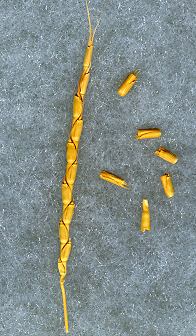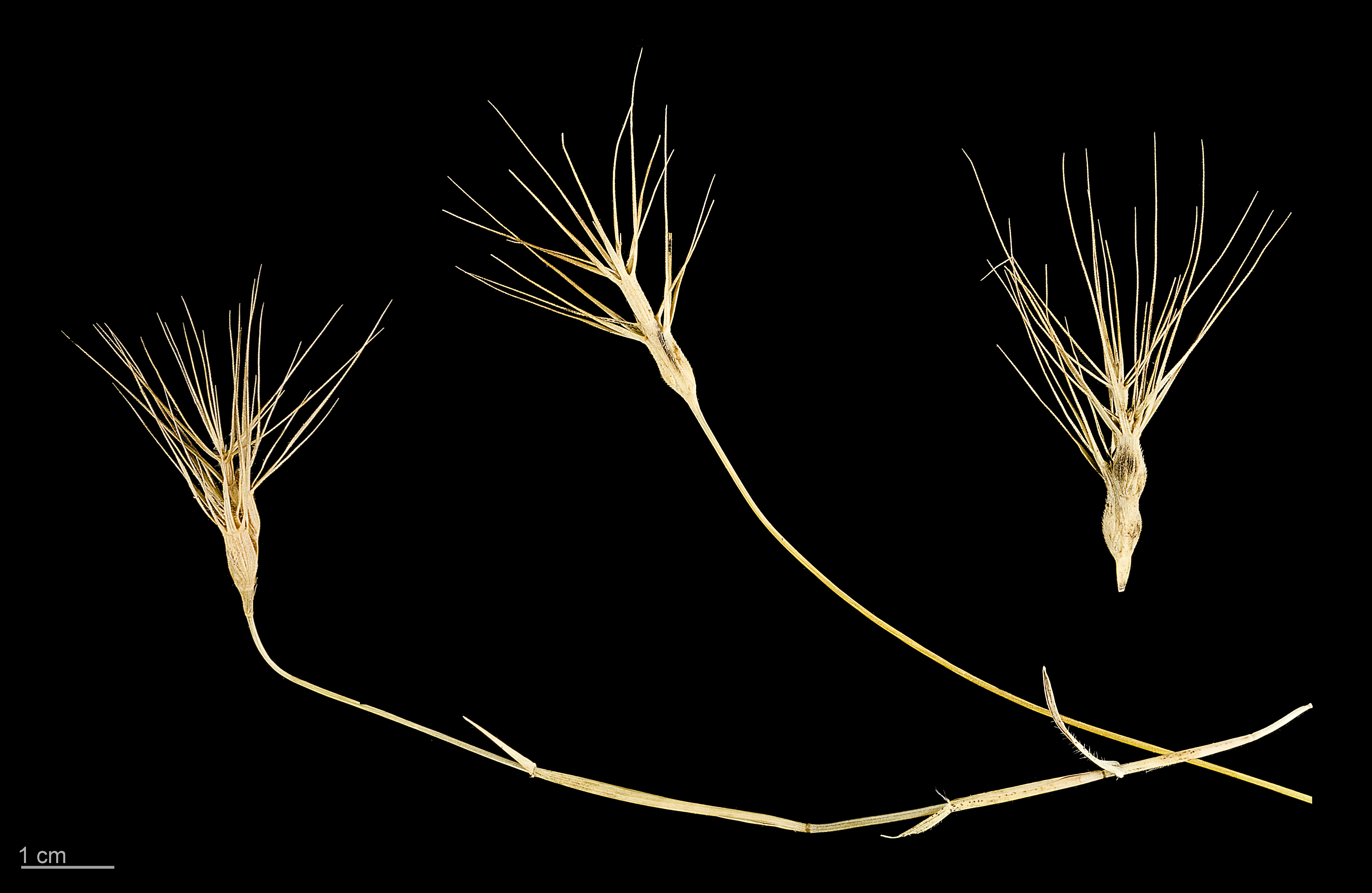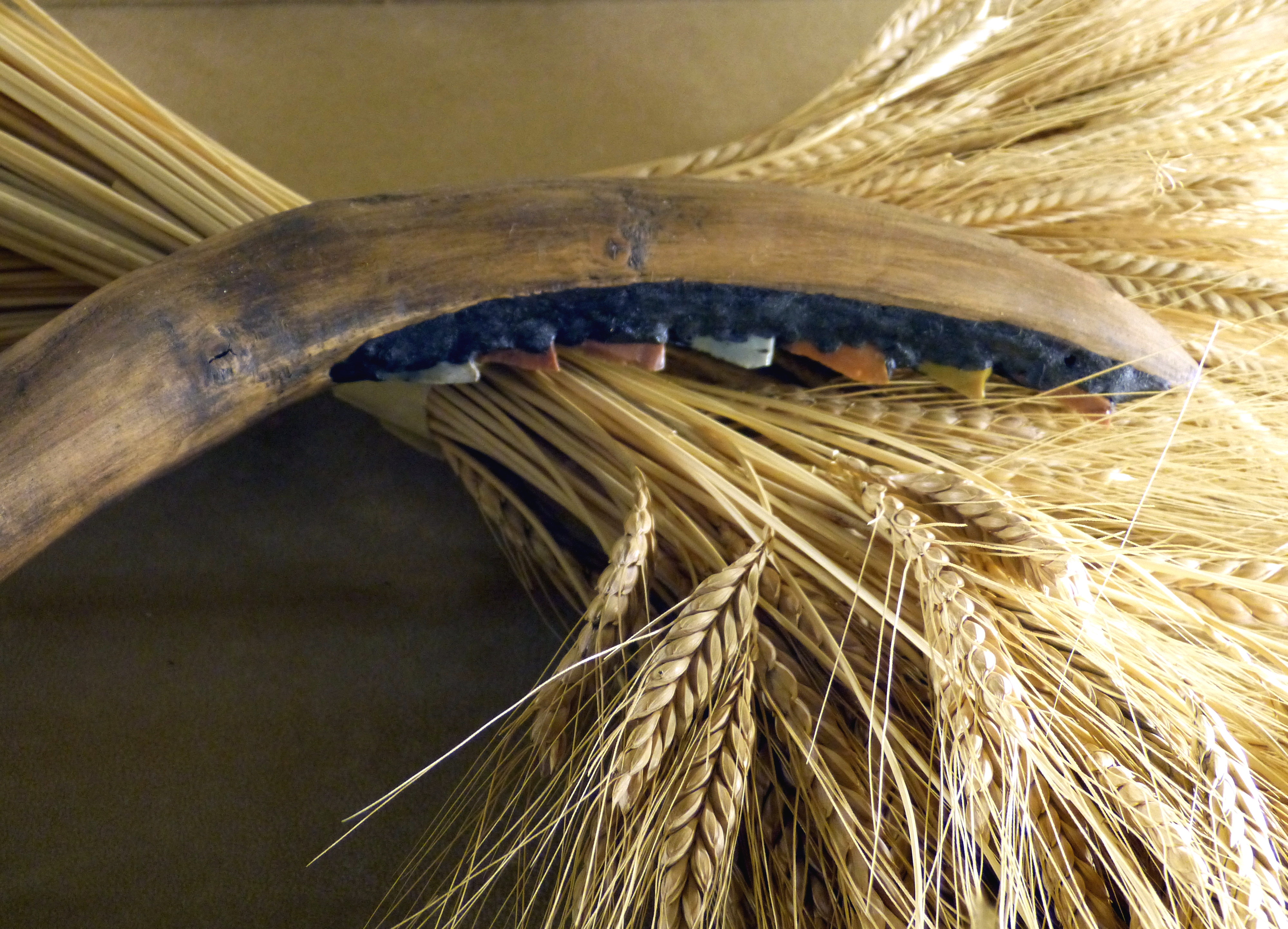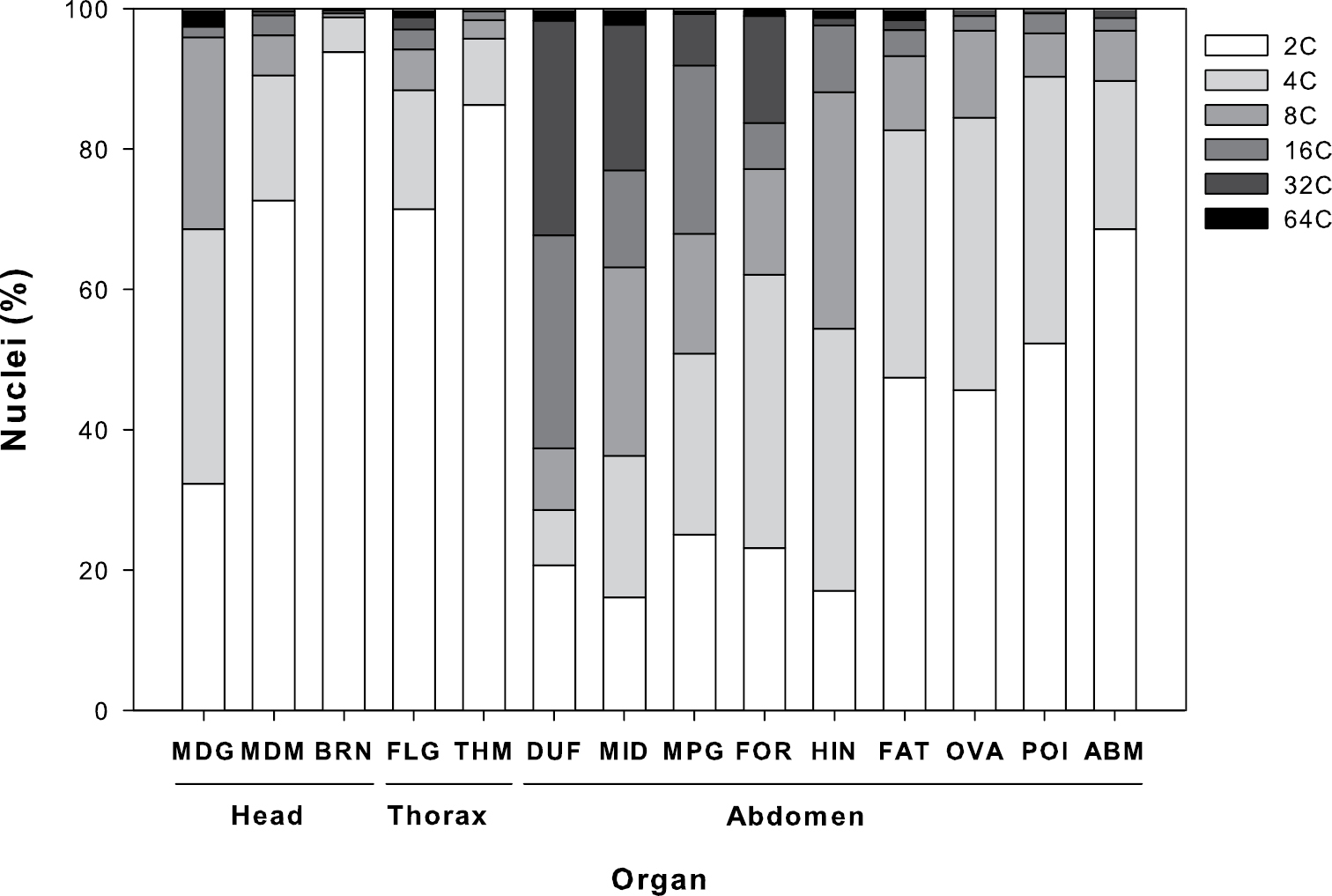|
Aegilops
''Aegilops'' is a genus of Eurasian and North American plants in the grass family, Poaceae. They are known generally as goatgrasses.''Aegilops''. Integrated Taxonomic Information System (ITIS). Some species are known as invasive s in parts of .Watson, L. and M. J. Dallwitz. 1992 onwards ''Aegilops''. The Grass Genera of t ... [...More Info...] [...Related Items...] OR: [Wikipedia] [Google] [Baidu] |
Aegilops Triuncialis
''Aegilops triuncialis'', or barbed goatgrass, is a grass species of the family Poaceae. It is a winter annual native to many areas in Eastern and Mediterranean Europe and Western Asia. It is considered an introduced, invasive species in North America, mainly in the Western coast of the United States. In its native lands, the grass thrives in mainly rocky, serpentine soil, but also does well in grasslands and ruderal/disturbed ground as well as oak woodlands. Description Barbed goatgrass grows to be about tall with few to many rigid, loosely erect aerial stems (culms). In late spring the plant produces rigid flower spikes consisting of three to six spikelets bearing long, stiff awns which assist in seed distribution. When the grass matures, the spikelets fall off in their entirety to germinate on the ground, and the long awns which give the plant its name assist in dispersal by animals, wind or water. As an invasive species Barbed goatgrass was introduced to North Ame ... [...More Info...] [...Related Items...] OR: [Wikipedia] [Google] [Baidu] |
Aegilops Tauschii
''Aegilops tauschii'', the Tausch's goatgrass or rough-spike hard grass, is an annual grass species. It is native to Crimea, the Caucasus region, western and Central Asia, Afghanistan, Pakistan, the western Himalaya, and parts of China, and has been introduced to other locales, including California. Taxonomy ''Aegilops tauschii'' is part of the tribe Triticeae, along with wheat. It is a diploid (2n=2x=14, DD) goatgrass species which has contributed the D genome to common wheat. Genome Zimin ''et al.'', 2016 provides a genome assembly. : : :This review cites this research. : : The ' nucleotide-binding site leucine-rich repeat (NLR) is a Plant disease resistance, resistance gene used in hexaploid wheat but originating in this species. ''Lr42'' confers all-stage resistance to wheat leaf rust, leaf rust. Lin ''et al.'', 2022 localize ''Lr42'' to by gene cloning, cloning and sequence analysis, sequence- and functional analysis, functional-analyses. : : :This review cites this resea ... [...More Info...] [...Related Items...] OR: [Wikipedia] [Google] [Baidu] |
Taxonomy Of Wheat
During 10,000 years of cultivation, numerous forms of wheat, many of them hybrids, have developed under a combination of artificial and natural selection. This diversity has led to much confusion in the naming of wheats. Genetic and morphological characteristics of wheat influence its classification; many common and botanical names of wheat are in current use. ''Aegilops'' and ''Triticum'' Similarities and differences The genus '' Triticum'' includes the wild and domesticated species usually thought of as wheat. In the 1950s growing awareness of the genetic similarity of the wild goatgrasses ('' Aegilops'') led botanists such as Bowden to amalgamate ''Aegilops'' and ''Triticum'' as one genus, ''Triticum''. This approach is still followed by some (mainly geneticists), but has not been widely adopted by taxonomists. ''Aegilops'' is morphologically highly distinct from ''Triticum'', with rounded rather than keeled glumes. Hybridisation and polyploidy ''Aegilops'' is i ... [...More Info...] [...Related Items...] OR: [Wikipedia] [Google] [Baidu] |
Aegilops Cylindrica
''Aegilops cylindrica'', also known as jointed goatgrass, is an annual grass seed native to Southern Europe and Russia that is part of the tribe Triticeae, along with wheat and some other cereals. It is not native to North America, however it has become a serious issue as a weed since it was introduced in the late 19th century. Due to its relation to winter wheat, it is very difficult to control. Not only are the grains similar in shape and size to the seeds of winter wheat, making it difficult to remove through grain cleaning methods, the shared genetics mean that no registered herbicides are available to single out jointed goatgrass while leaving winter wheat unharmed. This poses problems for farmers who have to suffer through reduced yields and poorer quality winter wheat. History and distribution Jointed goatgrass is a winter annual grass seed native to Southern Europe and Russia, It is considered a problem weed in United States, where it is now widely spread across west ... [...More Info...] [...Related Items...] OR: [Wikipedia] [Google] [Baidu] |
Aegilops Geniculata
''Aegilops geniculata'' is a species of grass known by the common name ovate goatgrass. It is native to the Mediterranean and western Asia, including Palestine and the Levant. Elsewhere it is known as a noxious weed A noxious weed, harmful weed or injurious weed is a weed that has been designated by an agricultural or other governing authority as a plant that is harmful to agricultural or horticultural crops, natural habitats or ecosystems, or humans or lives .... 250px, right External linksJepson Manual Treatment [...More Info...] [...Related Items...] OR: [Wikipedia] [Google] [Baidu] |
Wheat
Wheat is a group of wild and crop domestication, domesticated Poaceae, grasses of the genus ''Triticum'' (). They are Agriculture, cultivated for their cereal grains, which are staple foods around the world. Well-known Taxonomy of wheat, wheat species and hybrids include the most widely grown common wheat (''T. aestivum''), spelt, durum, emmer, einkorn, and Khorasan wheat, Khorasan or Kamut. The archaeological record suggests that wheat was first cultivated in the regions of the Fertile Crescent around 9600 BC. Wheat is grown on a larger area of land than any other food crop ( in 2021). World trade in wheat is greater than that of all other crops combined. In 2021, world wheat production was , making it the second most-produced cereal after maize (known as corn in North America and Australia; wheat is often called corn in countries including Britain). Since 1960, world production of wheat and other grain crops has tripled and is expected to grow further through the middle of ... [...More Info...] [...Related Items...] OR: [Wikipedia] [Google] [Baidu] |
Polyploid Wheat Origins
Polyploidy is a condition in which the biological cell, cells of an organism have more than two paired sets of (Homologous chromosome, homologous) chromosomes. Most species whose cells have Cell nucleus, nuclei (eukaryotes) are diploid, meaning they have two complete sets of chromosomes, one from each of two parents; each set contains the same number of chromosomes, and the chromosomes are joined in pairs of homologous chromosomes. However, some organisms are polyploid. Polyploidy is especially common in plants. Most eukaryotes have diploid somatic cells, but produce haploid gametes (eggs and sperm) by meiosis. A Ploidy, monoploid has only one set of chromosomes, and the term is usually only applied to cells or organisms that are normally diploid. Males of bees and other Hymenoptera, for example, are monoploid. Unlike animals, plants and multicellular algae have Biological life cycle, life cycles with two alternation of generations, alternating multicellular generations. The gamet ... [...More Info...] [...Related Items...] OR: [Wikipedia] [Google] [Baidu] |
Common Wheat
Common wheat (''Triticum aestivum''), also known as bread wheat, is a cultivated wheat species. About 95% of wheat produced worldwide is common wheat; it is the most widely grown of all crops and the cereal with the highest monetary yield. Taxonomy Numerous forms of wheat have evolved under human selection. This diversity has led to confusion in the naming of wheats, with names based on both genetic and morphological characteristics. List of common cultivars * Albimonte * Manital * Shirley * Hilliard Phylogeny Bread wheat is an allohexaploid a combination of six sets of chromosomes from different species. Of the six sets of chromosomes, four come from emmer (''Triticum turgidum'', itself a tetraploid) and two from '' Aegilops tauschii'' (a wild diploid goatgrass). Wild emmer arose from an even earlier ploidy event, a tetraploidy between two diploids, wild einkorn (''T. urartu'') and '' A. speltoides'' (another wild goatgrass). Free-threshing wheat is closely re ... [...More Info...] [...Related Items...] OR: [Wikipedia] [Google] [Baidu] |
Hybrid (biology)
In biology, a hybrid is the offspring resulting from combining the qualities of two organisms of different varieties, subspecies, species or genera through sexual reproduction. Generally, it means that each cell has genetic material from two different organisms, whereas an individual where some cells are derived from a different organism is called a chimera. Hybrids are not always intermediates between their parents such as in blending inheritance (a now discredited theory in modern genetics by particulate inheritance), but can show hybrid vigor, sometimes growing larger or taller than either parent. The concept of a hybrid is interpreted differently in animal and plant breeding, where there is interest in the individual parentage. In genetics, attention is focused on the numbers of chromosomes. In taxonomy, a key question is how closely related the parent species are. Species are reproductively isolated by strong barriers to hybridization, which include genetic and morph ... [...More Info...] [...Related Items...] OR: [Wikipedia] [Google] [Baidu] |
Invasive Species
An invasive species is an introduced species that harms its new environment. Invasive species adversely affect habitats and bioregions, causing ecological, environmental, and/or economic damage. The term can also be used for native species that become harmful to their native environment after human alterations to its food web. Since the 20th century, invasive species have become serious economic, social, and environmental threats worldwide. Invasion of long-established ecosystems by organisms is a natural phenomenon, but human-facilitated introductions have greatly increased the rate, scale, and geographic range of invasion. For millennia, humans have served as both accidental and deliberate dispersal agents, beginning with their earliest migrations, accelerating in the Age of Discovery, and accelerating again with the spread of international trade. Notable invasive plant species include the kudzu vine, giant hogweed (''Heracleum mantegazzianum''), Japanese knotw ... [...More Info...] [...Related Items...] OR: [Wikipedia] [Google] [Baidu] |
Emmer
Emmer is a hybrid species of wheat, producing edible seeds that have been used as food since ancient times. The domesticated types are ''Triticum turgidum'' subsp. ''dicoccum'' and ''T. t. ''conv.'' durum''. The wild plant is called ''T. t.'' subsp. ''dicoccoides''. The seeds have an awned covering, the sharp spikes helping the seeds to become buried in the ground. The principal difference between the wild and the domestic forms is that the ripened seed head of the wild plant shatters and scatters the seed onto the ground, while in the domesticated emmer, the seed head remains intact, thus making it easier for people to harvest the grain. Along with einkorn, emmer was one of the first crops domesticated in the Near East. It was widely cultivated in the ancient world, but is now a relict crop in mountainous regions of Europe and Asia. Emmer is one of the three grains called farro in Italy. Etymology Emmer is first attested in 1908 in English as a loanword from German , ... [...More Info...] [...Related Items...] OR: [Wikipedia] [Google] [Baidu] |
Rhizome
In botany and dendrology, a rhizome ( ) is a modified subterranean plant stem that sends out roots and Shoot (botany), shoots from its Node (botany), nodes. Rhizomes are also called creeping rootstalks or just rootstalks. Rhizomes develop from axillary buds and grow horizontally. The rhizome also retains the ability to allow new shoots to grow upwards. A rhizome is the main stem of the plant that runs typically underground and horizontally to the soil surface. Rhizomes have nodes and internodes and auxiliary buds. Roots do not have nodes and internodes and have a root cap terminating their ends. In general, rhizomes have short internodes, send out roots from the bottom of the nodes, and generate new upward-growing shoots from the top of the nodes. A stolon is similar to a rhizome, but stolon sprouts from an existing stem having long internodes and generating new shoots at the ends, they are often also called runners such as in the strawberry plant. A stem tuber is a thickene ... [...More Info...] [...Related Items...] OR: [Wikipedia] [Google] [Baidu] |









